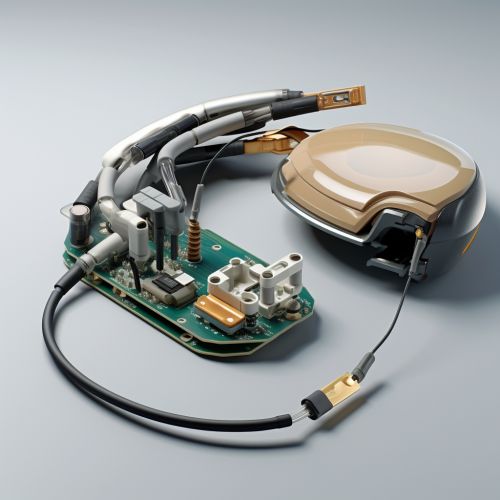Cochlear Implants
Introduction
A cochlear implant is an electronic medical device that replaces the function of the damaged inner ear. Unlike hearing aids, which make sounds louder, cochlear implants do the work of damaged parts of the inner ear (cochlea) to provide sound signals to the brain.
History
The idea of electrically stimulating the auditory nerve to restore hearing in people with severe to profound hearing loss was first proposed in the 18th century by Italian physician Alessandro Volta. However, it was not until the 20th century that the technology for cochlear implants was developed. The first cochlear implant was implanted in a patient in 1961 by French surgeon André Djourno and engineer Charles Eyriès.


Components of a Cochlear Implant
A cochlear implant system consists of two main components: an external portion that sits behind the ear and a second portion that is surgically placed under the skin.
External Component
The external component of a cochlear implant includes a microphone, a speech processor, and a transmitter. The microphone picks up sound from the environment, and the speech processor selects and arranges sounds picked up by the microphone. The transmitter receives signals from the speech processor and converts them into electric impulses.
Internal Component
The internal component, also known as the receiver-stimulator, is surgically implanted under the skin and secured in the bone behind the ear. It receives the coded electric impulses from the external component and delivers them to the electrodes implanted in the cochlea.
Surgical Procedure
The surgical procedure to implant the cochlear device is performed under general anesthesia and usually takes between two to three hours. The surgeon makes a small incision behind the ear to open the mastoid bone and access the cochlea. The electrode array is then inserted into the cochlea.
Post-Operative Care and Rehabilitation
After the surgery, the patient will need to rest and recover before the external component of the cochlear implant can be activated. This usually takes a few weeks. Once the device is activated, the patient will begin to hear sounds. However, it may take time for the patient to understand these sounds, and auditory training with a speech-language pathologist is often necessary.
Benefits and Risks
Cochlear implants can provide a range of benefits, including improved ability to hear speech without needing visual cues such as lip reading or sign language, improved ability to understand speech in noisy environments, and improved ability to localize sounds. However, as with any surgical procedure, there are potential risks, including infection, complications from anesthesia, and damage to the facial nerve.
Future Developments
Research is ongoing to improve cochlear implant technology and to expand the benefits of cochlear implants to more people. This includes research into combining cochlear implants with hearing aids, developing implants that can be used in both ears, and improving the sound quality of cochlear implants.
